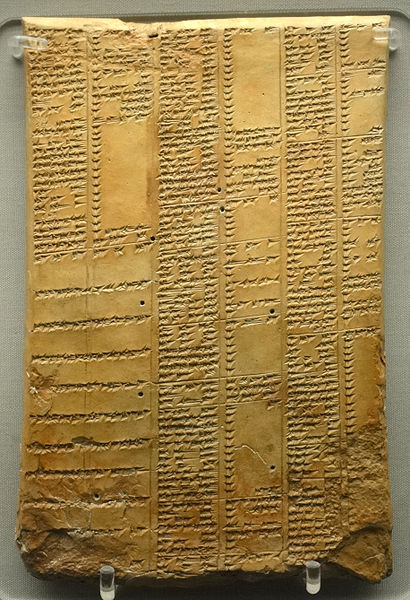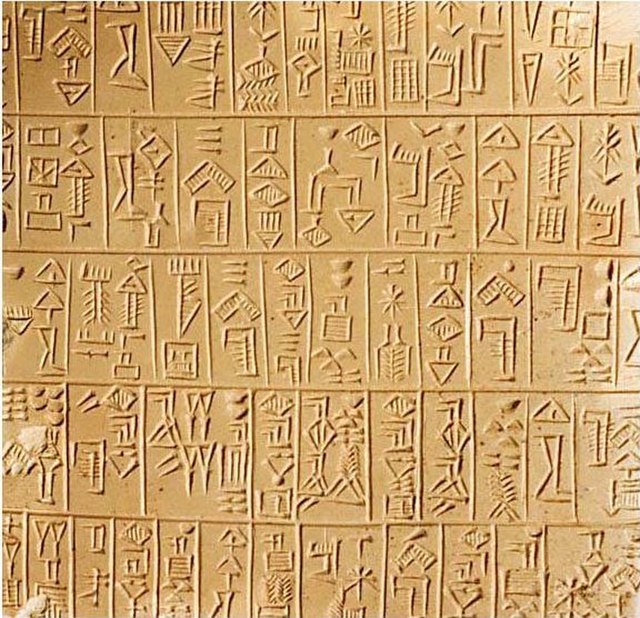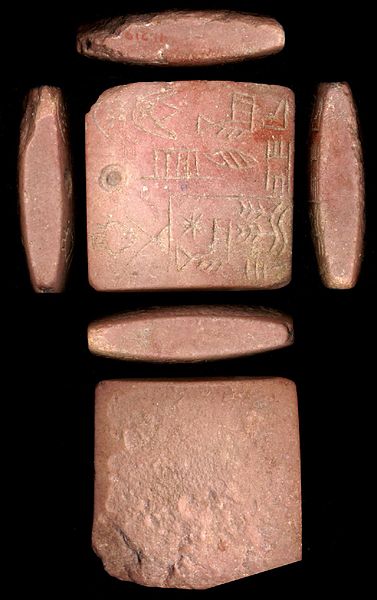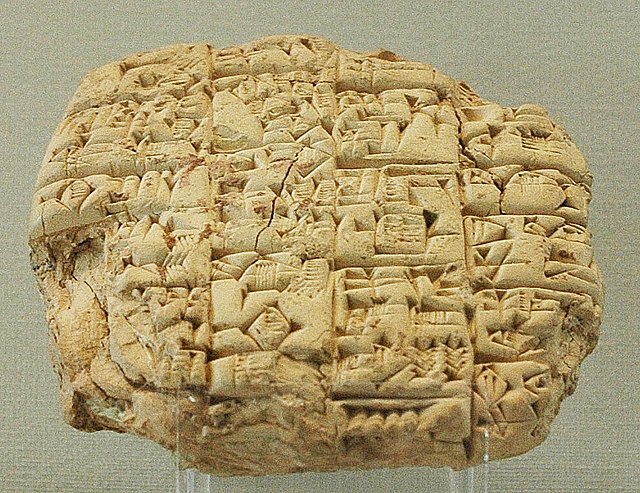The cuneiform lexical lists are a series of ancient Mesopotamian glossaries which preserve the semantics of Sumerograms, their phonetic value and their Akkadian or other language equivalents. They are the oldest literary texts from Mesopotamia and one of the most widespread genres in the ancient Near East. Wherever cuneiform tablets have been uncovered, inside Iraq or in the wider Middle East, these lists have been discovered.
16th tablet of the Urra=hubullu lexical series, Louvre Museum
Lexical list of synonyms; "explicit" Malku = šarru tablet 3, reverse Sumerian/Akkadian. Nineveh, 7th Century BC British Museum.
Sumerian is the language of ancient Sumer. It is one of the oldest attested languages, dating back to at least 2900 BC. It is accepted to be a local language isolate and to have been spoken in ancient Mesopotamia, in the area that is modern-day Iraq.
Sumerian language
This proto-literate tablet (c. 3100 – 2900 BC) records the transfer of a piece of land (Walters Art Museum, Baltimore)
The first known Sumerian-Akkadian bilingual tablet dates from the reign of Rimush. Louvre Museum AO 5477. The top half is in Sumerian, the bottom half is its translation in Akkadian.
Letter sent by the high-priest Lu'enna to the king of Lagash (maybe Urukagina), informing him of his son's death in combat, c. 2400 BC, found in Telloh (ancient Girsu)





